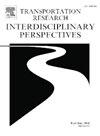Charge-on-the-move solutions for future mobility: A review of current and future prospects
IF 3.9
Q2 TRANSPORTATION
Transportation Research Interdisciplinary Perspectives
Pub Date : 2025-01-01
DOI:10.1016/j.trip.2025.101323
引用次数: 0
Abstract
The electrification of transportation has emerged as a key focus area over the past decade, driven by the rise of electric vehicles (EVs) and supportive governmental policies. Conventional EV charging solutions, while foundational, face notable challenges such as high infrastructure costs, low flexibility, and underutilization. Simultaneously, emerging transportation modes such as autonomous vehicles, shared mobility, modular systems, and aerial vehicles, introduce additional complexities, demanding more innovative charging solutions. This review emphasizes the potential of charge-on-the-move systems referred to as dynamic charging, as a transformative approach to address these challenges. Dynamic charging enables EVs to recharge while in motion, presenting opportunities to minimize battery sizes, reduce emissions, and optimize operational efficiency. The study critically evaluates state-of-the-art dynamic charging technologies, including their benefits, limitations, and applicability to future mobility systems, while also comparing these solutions based on infrastructure costs, readiness, and scalability. The findings suggest that the future of EV charging will likely involve a hybrid approach, integrating both conventional and dynamic solutions. Key priorities for advancing dynamic charging include developing optimization models for infrastructure deployment, finding the balance between battery size and battery life, establishing interoperability standards, and enhancing energy transfer efficiency while ensuring safety and sustainability. By addressing these research challenges, dynamic charging systems have the potential to redefine EV infrastructure and support the broader transition to sustainable and efficient mobility ecosystems. This review serves as a guide for researchers and planners seeking to align charging technologies with evolving transportation needs.
求助全文
约1分钟内获得全文
求助全文
来源期刊

Transportation Research Interdisciplinary Perspectives
Engineering-Automotive Engineering
CiteScore
12.90
自引率
0.00%
发文量
185
审稿时长
22 weeks
 求助内容:
求助内容: 应助结果提醒方式:
应助结果提醒方式:


